Less water, less light and less hassle. If you’re like most people, you do not have time to constantly enjoy your plants, but you love the character and style that houseplants give to indoor environments. You may not have the perfect sunny window? No worries. Plants with leaf color or those that bloom in low light are the most worry-free way to get a lush effect.
Favorite potted plants in low light
Many common houseplants are easy to care for and can be exotically colorful; in fact, some foliage may be more dazzling in low light. Take dieffenbachia, which produces abundant leaves in variegated patterns of cream, yellow or white. Its upright pattern makes it ideal for any environment, from kitchen to bathroom to corner office or office corner.
With white-spotted leaves and white stems, ‘Star White’ dieffenbachia is one of many varieties, all equally attractive. Dieffenbachia is tolerant of all possible conditions, from low light to strong light, and can reach up to 6 feet in height with the right care.
This eye-catcher is related to skunk cabbage (but does not have the smell) and goes by the common name “dumbcane” thanks to its effective defense system. The leaves and stems of dieffenbachia contain irritating crystals called rapids which can cause burning and stinging, so avoid touching your eyes after handling the plant and keep pets and small children away.

Dieffenbachia
The elegant snake growth is an excellent choice for areas with low light. It is one of the easiest houseplants to care for and comes in a variety of shapes nowadays – from the wide and flat leaves of “Whale’s Fin” to the thin, pyramid-shaped nails of “Starfish”, there is a style for everyone. Of course, the classic dark and light green snake plant is just as beautiful too!
Snake plants, also known as “mother-in-law’s tongue”, are a succulent plant from the forests of South Africa, so they are sensitive to overwatering and do well in low light. Read more about taking care of snake plants.
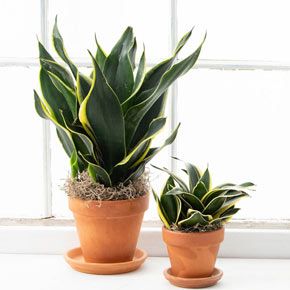
Snake plant.
Ferns is another favorite for low light, and no one so much maybe as Boston ferns. Its discovery was a happy accident: the plant came to the attention of Fred C. Becker, a florist in Cambridge, Massachusetts, when in 1894 a nursery in Philadelphia sent 200 fern plants to Becker. (Victorians loved ferns!) He noticed that one fern was clearly different from the rest. He started spreading it, and soon after, botanists identified it and suggested the name.
Aside from the need for light, the Boston fern can be tricky in the winter. In northern climates, it survives best in a room that is kept cool (50 ° to 55 ° F) and has a south-facing window. Water only occasionally until you see new leaves appear (sometime in February), then increase on the water.
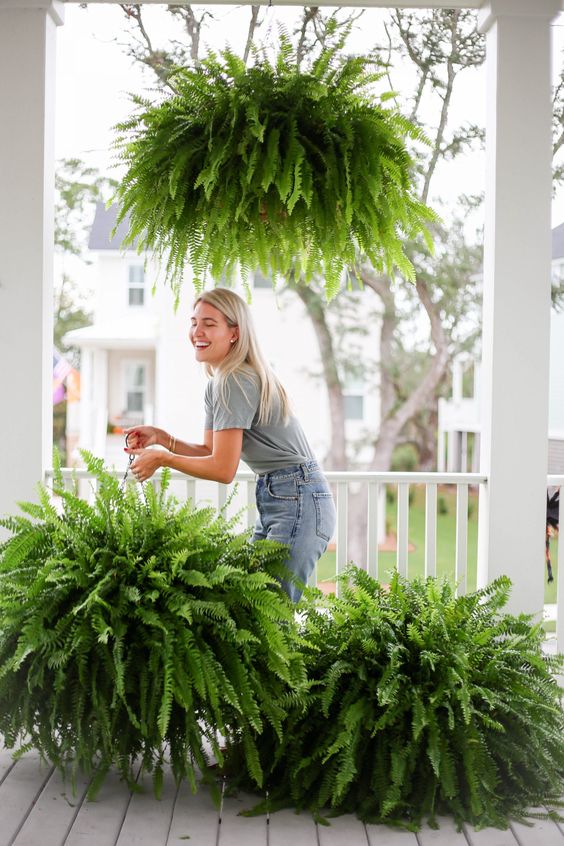
Boston ferns.
Low light flowering potted plants
Love plants that bloom? Flowering plants such as spathiphyllum and anthurium has been bred to give flowers almost all year round.
Spathiphyllum, aka peace plant or peace lily, is native to rainforests. Is it then strange that it thrives in heat, humidity and low light? Filtered light and fluorescent lamps are good; direct sun should be avoided. (Yellow leaves are a sign of excessive light.) Keep the soil moist, not wet, and the environment between 68 ° and 85 ° F. You will be rewarded twice for your care: NASA found peace lily to be one of the top 10 natural air purifiers.
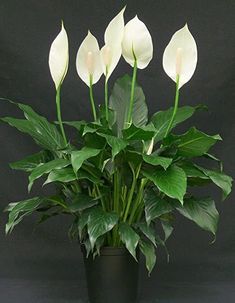
Peace plant..
Look for anthurium with flower colors beyond the usual red. Purple, lavender, pink and warm orange flowers cover plants 10 months a year. Due to their multiheading properties, there may be dozens of flowers on the plant at a time. They bloom more in brighter light, but can still give some blooms in areas with lower light.
Anthurium
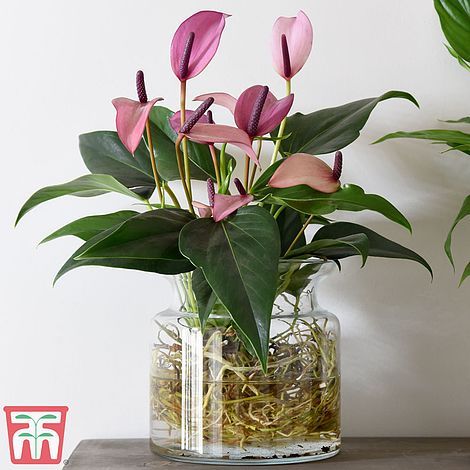
Eye-catching potted plants for dim light
Another desirable property – thicker leaves – means that plants can better withstand the low humidity in most homes. Alocasiaswith their large veins, heart- or arrow-shaped leaves and crotons, with their eye-catching, fire-colored foliage, thrive in environments that maintain a temperature between 60 ° and 65 ° F and a humidity of 25 to 50 percent. Crotons like more light, which brings out their rich colors, but do not put them in direct sunlight. (But if the leaves become dull – or worse, fall off – move them to a brighter place.) Water sparingly; These plants can also go without water for long periods.
‘Red gold’ aglaonemas are tough plants, with thick, leathery leaves that can withstand low humidity and lively sprinkled with hundreds of red, yellow and gold spots. ‘Red gold’ requires a little light and will thrive in a north window. These plants also go by the name “Chinese Evergreen.”

Aglaonema, also known as Chinese evergreen
“Brazilian” philodendron, aka heart leaves, sport lemon and lime-colored stripes on each green, heart-shaped leaf. The vines make excellent hanging baskets. ‘Fall’ and “The Prince of Orange” has burnt and light orange leaves. These philodendrons are self-propelled, which means that there are several growth guides, and their leaves are thick and wide to tolerate low humidity. Other colorful philodendrons in the same class include ‘Moonlight’a bright yellow, and “Black cardinal”which has deep burgundy leaves that are almost black.
Calatheas copes well in east or west windows with about 50 percent humidity. Spray them daily or place pots on a tray with pebbles and water. Look for ‘Dottie’ calathea. Its round, glossy leaves are a mixture of purple and black, but it is the vibrant burgundy zigzag lines on each leaf that distinguish this plant from all others.
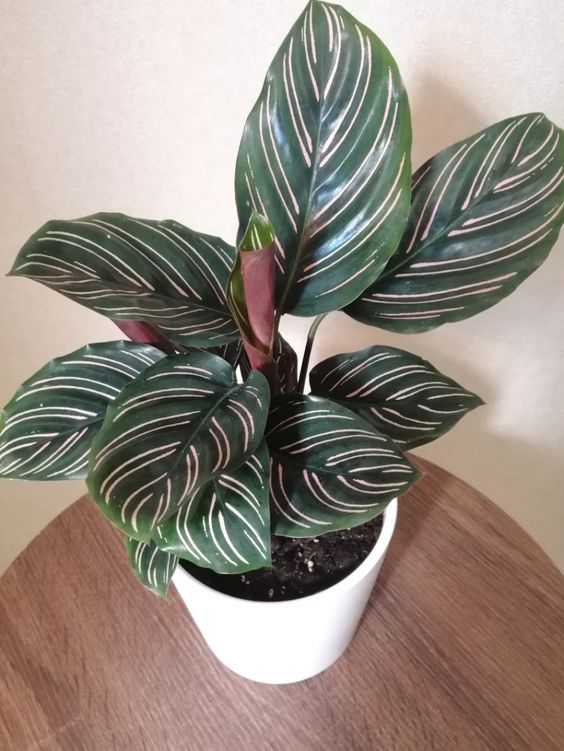
Calathea
The spider planta mainstay in low light situations, has a colorful cousin, the ‘Flash Fire’ mandarin growth. Discovered in Indonesia, it’s not what you might think: This variety does not produce displacements or runners like spiders do. Instead, the plant grows upright in a vortex of oblong leaves. The main stem and leaf ribs are bright orange. ‘Flash Fire’ is happy in an east or west window.
Finally, give a cheer for rex begonia: They beautify indoor windows with their fantastic blends of colored leaves. Some are bred to tolerate lower humidity and are even more spectacular in color. Favorite varieties of rex begonia to look for are ‘Fireworks’a combination of plum and silver, and ‘River Nile’, remarkable for wavy, spiral-shaped leaves that are 6 inches in diameter and colored chartreuse with ruby markings. In winter, it produces pink flowers to help you get to spring.
What are your favorite potted plants for low light areas? Let us know in the comments!